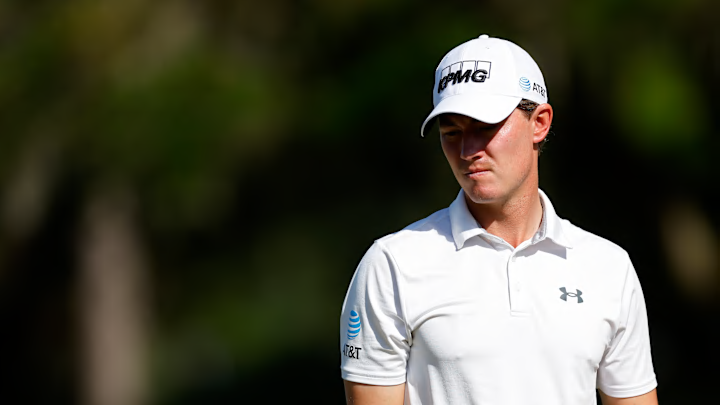That's because his father, Scott McNealy, was the co-founder of Sun Microsystems, which was bought by Oracle in 2010 for $7 billion. It wasn’t like Maverick needed to worry about finding his next meal.
But Maverick McNealy loved golf and wanted to play the PGA Tour.
He worked his way up to the Web.com and then Korn Ferry, finally earning his card with his finish on Korn Ferry in 2019. Then he had a medical issue, a collarbone injury caused by his swing path.
“I was under the plane and hitting a lot of stuck push draws. That was causing my left shoulder to have to work in pretty aggressively, which is what caused the injury,” he explained.
Currently, he’s working with Butch Harmon and Scott Hamilton, a Golf Magazine Top 100 Teacher.
“Butch is just an incredible, incredible golf mind, and every time I leave that place I feel like I'm going to win,” McNealy said.
Hamilton is McNealy's set of eyes for day-to-day work and works with McNealy’s stats expert.
Now he’s in a tie for fourth at The Players after two rounds. He’s five back of Wyndham Clark.
“I feel really grateful that I was able to be back and ready and able to play in this tournament this year,” McNealy said. “The most fun thing is the way I've been playing it and ball-striking my way around this place.”
He’s still learning how to play courses, and every season can bring new information on how to conquer the designers who love to challenge today’s players.
“With Pete Dye golf courses, I feel like every time I play them, I like them a little bit more,” he added. “It's starting to make sense, starting to see the greens better and see the shots a lot better, too.”
The challenge of TPC Sawgrass, according to McNealy, is what it requires in terms of shotmaking.
“There's not many golf courses that you actually have to hit draws and fades. 1 is a fade hole, 2 is a draw hole, 4 is a fade hole, 5 is a fade hole, 6 and 7, draw,” he said. “It just makes you hit all the different shots.”
(Not to argue with McNealy, but an amateur could play the course without that kind of expertise. A straight shot, or a repeatable shot at TPC Sawgrass will work.)
One important thing he has learned from Harmon is fixing his swing on the fly.
In round two, he pulled a 4-iron off the tee, and as soon as he did it, he knew what the problem was and how to fix it. According to McNealy, he was coming out of his posture.
“Butch always sees it with my right foot coming up early, and that's when that club gets stuck and flipped and miss it left,” McNealy explained. “Walking to 9 tee, I said, for the next 10 holes I'm just going to stay in my posture a little better, and came out straight again.”
His best shot in round two, he said, was the second at the 16th hole, the par 5 that has delivered so much drama over the years. The wind was off the right, and he had 217 yards to the hole.
“It was one of those where I'm really going to have to hold off the face, and that's a hard shot for me because I'm so used to having to flip it. So, I really had to hold it off, and it came off absolutely perfect, and made eagle there,” he concluded.
McNealy gave a great explanation of Pete Dye’s design work saying that one characteristic is the closer golfers hit to the trouble, the better angle or easier the next shot will be. In round two, McNealy had two bogeys, four birdies, and the eagle at 16 for a second round 68.
Even though he was tied for second at one point on Friday, it was unlikely he was going to play with Wyndham Clark on Saturday. That honor will likely go to Xander Schauffele who followed his first round 65 with a 69.
